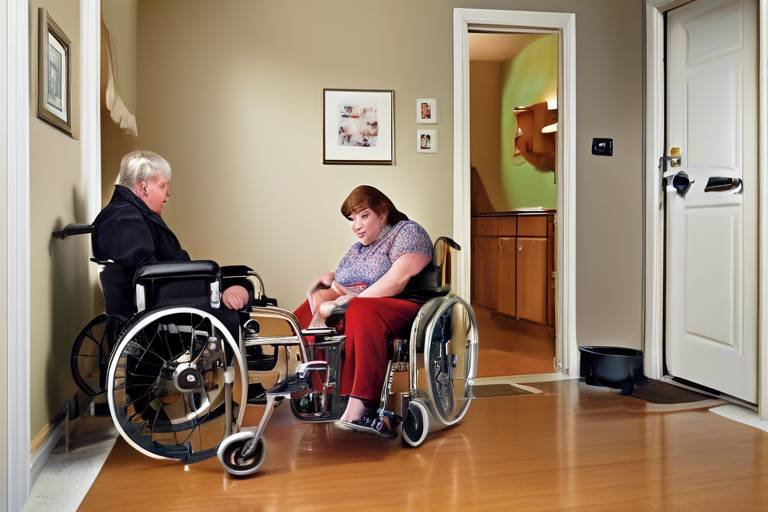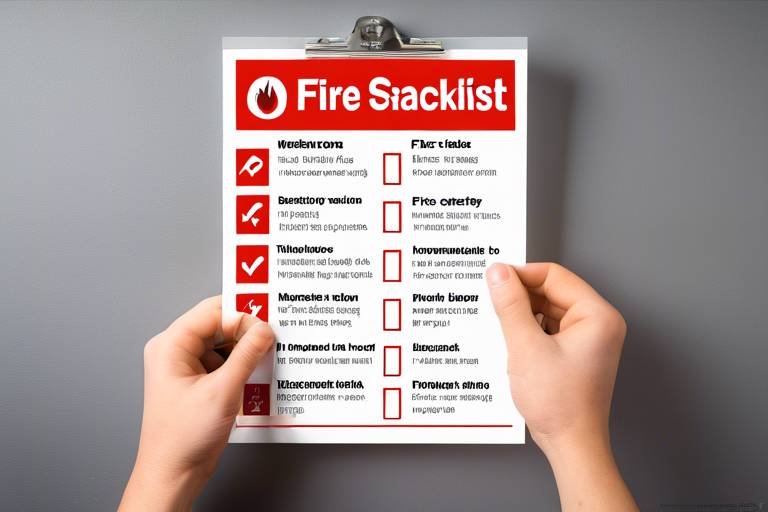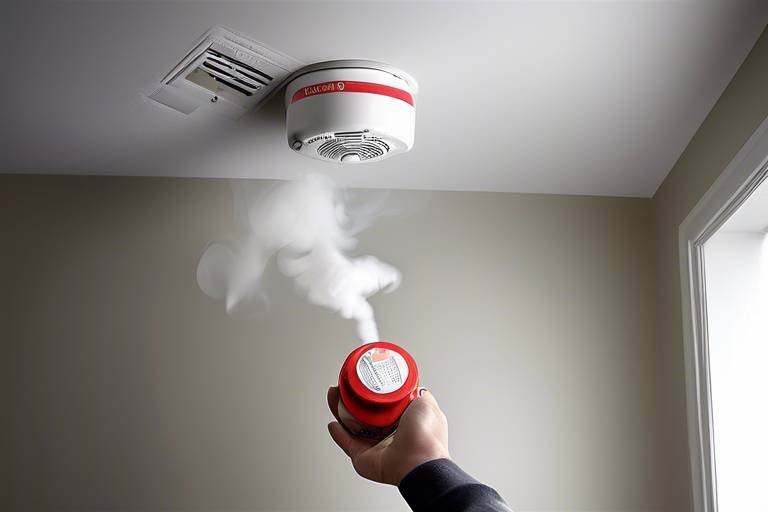Making Your Home Safe from Earthquakes
Earthquakes can strike without warning, leaving devastation in their wake. The ground shakes, buildings sway, and lives can be disrupted in an instant. But what if you could take steps to minimize the risks? Making your home safe from earthquakes isn't just about having a sturdy structure; it's about being proactive, prepared, and informed. In this article, we'll dive deep into essential strategies and tips that can enhance your home's safety during these seismic events, ensuring that you and your family are well-protected when the earth starts to tremble.
Before you can safeguard your home, it's important to understand the types of earthquakes that can occur and their potential impacts. Earthquakes can vary in magnitude and intensity, ranging from minor tremors that barely rattle a cup on your table to major quakes that can cause catastrophic damage. The level of risk your home faces largely depends on its geographical location, construction type, and foundation stability. By understanding these risks, you can implement effective safety measures and preparedness strategies tailored to your specific situation.
One of the most effective ways to protect your home is through structural reinforcements. Strengthening your walls, foundations, and roofs can significantly reduce the risk of damage during an earthquake. Think of your home as a ship navigating through rough waters; if the hull is strong, it can withstand the waves. Similarly, a well-reinforced home can endure the shaking of an earthquake. Let’s explore various methods to enhance your home's structure.
Your home’s foundation is its backbone; without a strong foundation, the entire structure is at risk. Techniques such as bolting and underpinning can help enhance your foundation's stability. Bolting involves securing the house to its foundation with steel bolts, while underpinning strengthens the foundation by extending it deeper into the ground. These methods can provide the necessary support to withstand seismic forces.
Imagine your home resting on a giant rubber pad that absorbs the shocks of an earthquake. This is essentially how base isolation systems work. By decoupling your home from ground motion, these systems can significantly reduce the amount of energy transferred during an earthquake, protecting your home from damage. While they can be a significant investment, the peace of mind they offer is invaluable.
Retrofitting is like giving your home a makeover, but instead of cosmetic changes, you're enhancing its safety features. Upgrading existing structures to meet modern safety standards is crucial. This can include adding shear walls, reinforcing roofs, and securing heavy furniture to walls. Retrofitting not only improves your home's earthquake resistance but can also increase its overall value.
The walls and roof of your home are critical components that need reinforcement to prevent collapse during seismic events. Using materials such as plywood sheathing and steel braces can enhance the strength of walls, while strapping down roofs can prevent them from being lifted off during strong shakes. Think of these reinforcements as the armor that shields your home from the brute force of an earthquake.
Having a sturdy home is just one part of earthquake safety; creating an emergency preparedness plan is equally vital. This plan should outline evacuation routes, communication strategies, and designated meeting points for your family. What will you do if an earthquake strikes while you're at work or school? Having a plan in place can make all the difference in ensuring your family's safety.
Assemble an emergency kit filled with essential supplies to keep your family safe during an earthquake. This kit should include:
- Water (at least one gallon per person per day for three days)
- Non-perishable food (enough for three days)
- First aid supplies
- Flashlights and batteries
- Whistle to signal for help
- Multi-tool or knife
- Personal documents (in a waterproof container)
Having these supplies on hand can help you weather the storm until help arrives.
During an earthquake, communication can be challenging. Establishing a reliable communication strategy is crucial. Designate a family member or friend outside your immediate area as your emergency contact. This way, if you get separated, you can still stay connected through texts or calls. Remember, during a disaster, phone lines can get congested, so consider using messaging apps that work over Wi-Fi.
Don't underestimate the power of community when it comes to earthquake preparedness. Local organizations often provide resources and support that can enhance your safety during emergencies. Building connections with these organizations can be a lifesaver when disaster strikes.
Familiarize yourself with local emergency services and their roles during an earthquake. Knowing how to contact these services and understanding their capabilities can make a significant difference in your response to an emergency. Always have their contact information readily available.
Participating in community training programs focused on earthquake preparedness can equip you with the knowledge and skills needed to respond effectively. These programs often cover first aid, search and rescue techniques, and how to safely navigate during an earthquake. The more prepared you are, the better you'll be able to help yourself and others when the ground shakes.
Q: What should I do during an earthquake?
A: Drop, cover, and hold on! Get down on your hands and knees, cover your head and neck, and take cover under a sturdy piece of furniture until the shaking stops.
Q: How can I secure heavy furniture in my home?
A: Use brackets and straps to secure tall furniture like bookcases and cabinets to the walls. This prevents them from tipping over during an earthquake.
Q: Are there any apps for earthquake alerts?
A: Yes! There are several apps available that provide real-time earthquake alerts and safety tips. Downloading one can keep you informed and prepared.

Understanding Earthquake Risks
This article discusses essential strategies and tips to enhance your home's safety during earthquakes, ensuring you and your family can stay protected in the event of seismic activity.
When it comes to earthquakes, understanding the risks is like reading the fine print before signing a contract. You wouldn’t want to be caught off guard by hidden clauses, right? Similarly, knowing the different types of earthquakes and their potential impacts on your home can be a lifesaver. Earthquakes can be categorized into various types, including tectonic, volcanic, and collapse earthquakes. Each type has its own causes and effects, but they all have one thing in common: they can cause significant damage to structures, including your beloved home.
For instance, tectonic earthquakes, which are the most common, occur due to the movement of the Earth's plates. These can range from minor tremors to massive quakes that can shake buildings to their foundations. On the other hand, volcanic earthquakes happen in volcanic regions, often preceding an eruption, and can also pose risks to nearby structures. Lastly, collapse earthquakes are typically localized and occur when underground caves or mines collapse, but they can still wreak havoc on the surface.
To truly grasp the potential damage, consider the following factors that influence earthquake risks:
- Location: Living in a seismically active zone increases your risk significantly.
- Building Structure: Older homes or those not built to modern seismic standards are more vulnerable.
- Soil Type: Soft or loose soil can amplify seismic waves, increasing potential damage.
Understanding these risks is crucial for implementing effective safety measures. For instance, if you live in an area prone to tectonic earthquakes, investing in structural reinforcements becomes a priority. Additionally, being aware of your surroundings and the types of buildings in your vicinity can help you make informed decisions about your safety during an earthquake.
Moreover, it’s not just about the immediate impact; the aftermath of an earthquake can also pose significant risks. Aftershocks, which are secondary tremors that follow the main shock, can lead to further damage to already weakened structures. It’s like a boxer who, after being knocked down, faces another punch before they can get back on their feet. Therefore, having a plan in place for these situations is equally important.
In summary, understanding earthquake risks is the first step towards safeguarding your home and family. By being informed about the types of earthquakes, their potential impacts, and the factors that contribute to risk, you can take proactive measures to enhance your home’s safety. After all, knowledge is power, especially when it comes to protecting what matters most.
Explore various methods to reinforce your home's structure. Strengthening walls, foundations, and roofs can significantly reduce the risk of damage during an earthquake.
Discover techniques for enhancing your home's foundation, including bolting and underpinning. A strong foundation is vital for earthquake resilience and stability.
Base isolation systems can absorb seismic waves, protecting your home from damage. Learn how these systems work and their benefits for earthquake safety.
Retrofitting involves upgrading existing structures to meet modern safety standards. Explore various retrofitting techniques to enhance your home's earthquake resistance.
Reinforcing walls and roofs is essential for preventing collapse during seismic events. Discover effective materials and methods to enhance these critical components of your home.
Creating an emergency preparedness plan is vital for ensuring safety during earthquakes. Learn how to develop a comprehensive plan that includes evacuation routes and communication strategies.
Assemble an emergency kit with essential supplies for your family. This section outlines what to include for effective preparedness in the event of an earthquake.
Establishing communication strategies is crucial during emergencies. Learn how to stay connected with family and emergency services when an earthquake strikes.
Explore the various community resources available for earthquake preparedness and response. Building connections with local organizations can enhance your safety and support during emergencies.
Familiarize yourself with local emergency services and their roles during an earthquake. Knowing how to contact and utilize these services can be lifesaving.
Participate in community training programs focused on earthquake preparedness. These programs can equip you with the knowledge and skills to respond effectively during seismic events.
Q: What should I do immediately after an earthquake?
A: Stay calm, check for injuries, and assess your surroundings for hazards. Move to a safe location if necessary.
Q: How can I secure heavy furniture in my home?
A: Use brackets and straps to secure bookshelves, cabinets, and other heavy items to the walls to prevent tipping.
Q: Are there any apps for earthquake alerts?
A: Yes, several apps provide real-time alerts and safety information during seismic events. Check your app store for options.
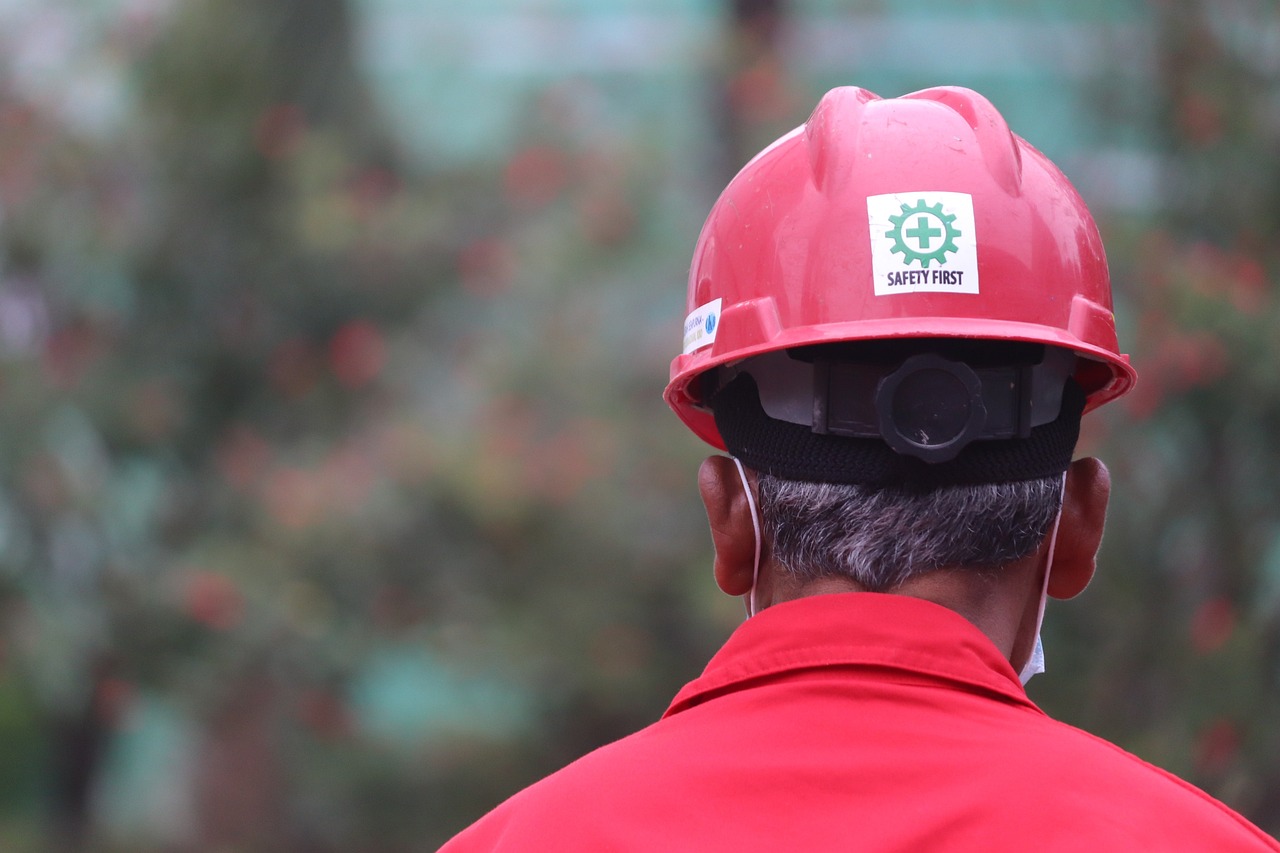
Structural Reinforcements
When it comes to safeguarding your home against the unpredictable forces of nature, play a pivotal role. Think of your home as a fortress; if the walls are weak, the entire structure is at risk when the ground starts to shake. By enhancing the integrity of your home, you not only protect your belongings but also ensure the safety of your loved ones. So, what can you do to fortify your castle against earthquakes? Let’s dive into some effective methods!
First off, let’s talk about the foundation. This is the bedrock of your home, quite literally! A strong foundation is essential for stability during seismic activity. Techniques such as bolting and underpinning can significantly enhance your foundation's resilience. Bolting involves securing your home’s structure to its foundation with metal bolts, while underpinning strengthens the foundation itself, allowing it to bear more weight and resist movement. Imagine trying to balance a tall stack of books on a wobbly table; it’s only a matter of time before everything comes crashing down!
Now, let’s explore something a bit more advanced: base isolation systems. These innovative systems are designed to absorb seismic waves, acting as a cushion for your home. By placing flexible bearings between your home and its foundation, these systems allow your house to move independently from the ground motion during an earthquake. It’s like having a shock absorber in your car; it smooths out the bumps and protects what’s inside. Investing in base isolation can be a game-changer, especially if you live in a high-risk area.
Retrofitting is another critical strategy for enhancing your home’s earthquake resistance. This process involves upgrading existing structures to meet modern safety standards. Think of it as giving your home a makeover, but instead of just aesthetics, you’re focusing on durability and safety. Common retrofitting techniques include adding steel braces, reinforcing walls with plywood, and installing shear walls that help distribute seismic forces evenly. Each of these methods contributes to a stronger, more resilient home.
Moreover, reinforcing the walls and roofs is equally essential. During an earthquake, the walls and roof are your first line of defense against collapse. Utilizing materials like fiber-reinforced polymers or steel plates can significantly increase the strength of these critical components. Imagine your home as a superhero; the walls and roof are its armor, protecting it from the forces of nature. Without proper reinforcement, that armor can easily crack under pressure.
In summary, investing in structural reinforcements is not just a precaution; it’s a necessity for anyone living in earthquake-prone areas. By focusing on foundation strengthening, incorporating base isolation systems, and retrofitting your home, you’re taking significant steps toward ensuring safety and peace of mind. Remember, a well-prepared home is a safe home!
Q: What is the best way to reinforce my home's foundation?
A: The best methods include bolting your home to the foundation and underpinning to enhance stability.
Q: How do base isolation systems work?
A: Base isolation systems absorb seismic waves, allowing your home to move independently from the ground motion during an earthquake.
Q: What materials are recommended for wall and roof reinforcement?
A: Fiber-reinforced polymers and steel plates are commonly used to strengthen walls and roofs against seismic forces.
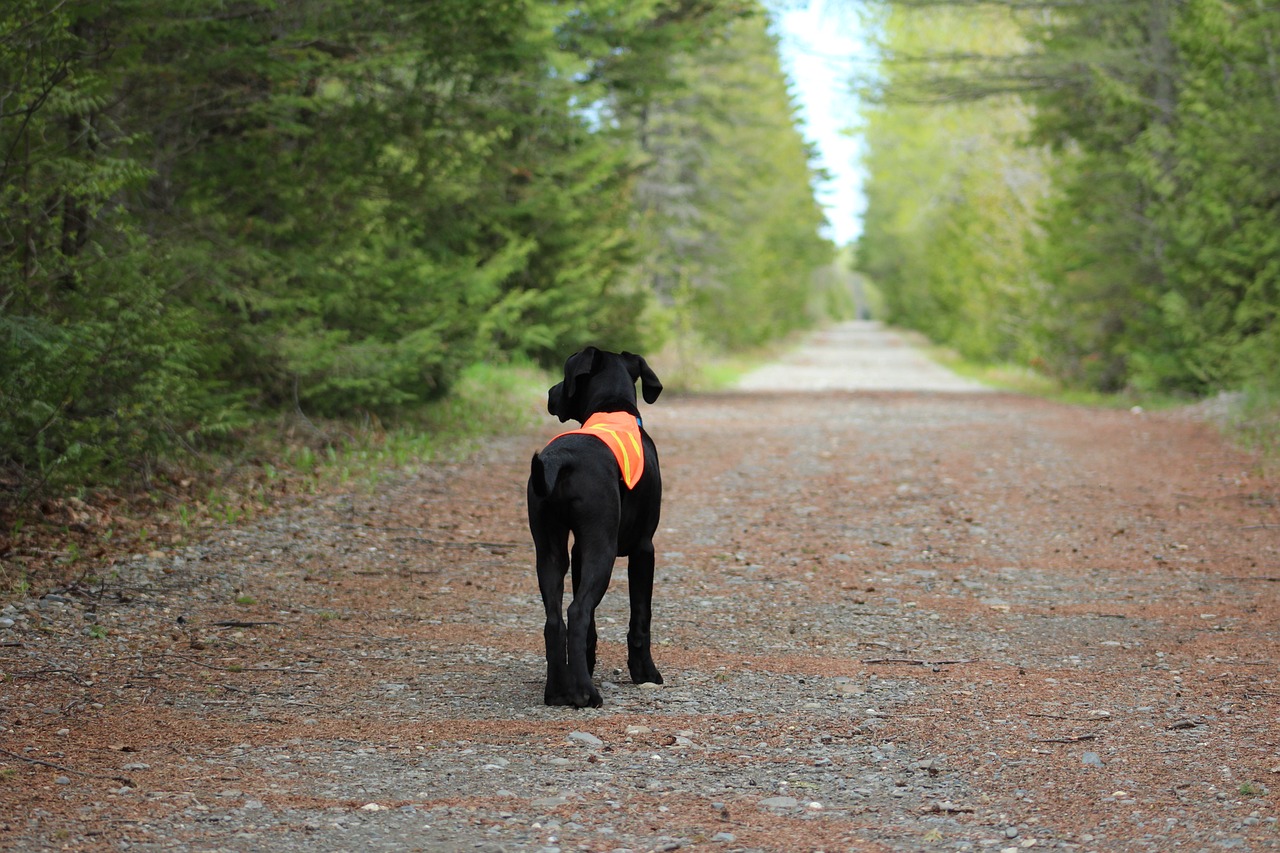
Foundation Strengthening
When it comes to safeguarding your home against the unpredictable forces of nature, is a crucial step that often gets overlooked. Think of your home’s foundation as the roots of a tree; just as strong roots anchor a tree and allow it to withstand storms, a robust foundation is essential for your home to endure the shaking of an earthquake. Without a solid foundation, your home is vulnerable to significant damage, which can lead to costly repairs and, more importantly, safety risks for you and your loved ones.
One effective method for enhancing your foundation's strength is bolting. This process involves securing your home to its foundation with metal bolts. It’s akin to fastening a seatbelt in a car; it keeps everything in place during sudden movements. Bolting is particularly beneficial for homes built on a raised foundation, as it prevents the structure from sliding off its base. Another technique is underpinning, which involves deepening or expanding the foundation to provide more stability. This method is especially useful for homes that have settled unevenly over time, much like how a person might need to adjust their stance to maintain balance when standing on a sloped surface.
Additionally, it’s vital to consider the soil composition beneath your home. Different types of soil react differently to seismic activity. For instance, clay soils can expand and contract, leading to movement that can compromise your foundation. In contrast, gravelly soils tend to provide better stability. A thorough geotechnical assessment can help you understand the soil conditions and guide you in making informed decisions about foundation strengthening.
To give you a clearer picture of the various methods available for foundation strengthening, here’s a simple table summarizing some popular techniques:
| Technique | Description | Benefits |
|---|---|---|
| Bolting | Securing the structure to the foundation with metal bolts. | Prevents sliding and enhances stability. |
| Underpinning | Deepening or expanding the foundation for added support. | Addresses uneven settling and improves strength. |
| Soil Stabilization | Improving the quality of the soil beneath the foundation. | Enhances overall stability and reduces movement. |
In conclusion, strengthening your home's foundation is not just about making it more resilient to earthquakes; it’s about ensuring the safety and security of your family. Investing in these reinforcement techniques can provide peace of mind, knowing that your home is better equipped to handle whatever nature throws its way. So, don’t wait until the ground starts shaking—take action now to fortify your foundation and protect your loved ones.
Q: How do I know if my foundation needs strengthening?
A: Signs that your foundation may need strengthening include cracks in the walls, uneven floors, or doors and windows that stick. If you notice these issues, it’s a good idea to consult a professional.
Q: Can I strengthen my foundation myself?
A: While some minor repairs can be DIY, foundation strengthening typically requires professional expertise to ensure safety and effectiveness.
Q: How much does foundation strengthening cost?
A: The cost can vary widely based on the method used and the extent of the work required. It's best to get quotes from several contractors to understand your options.
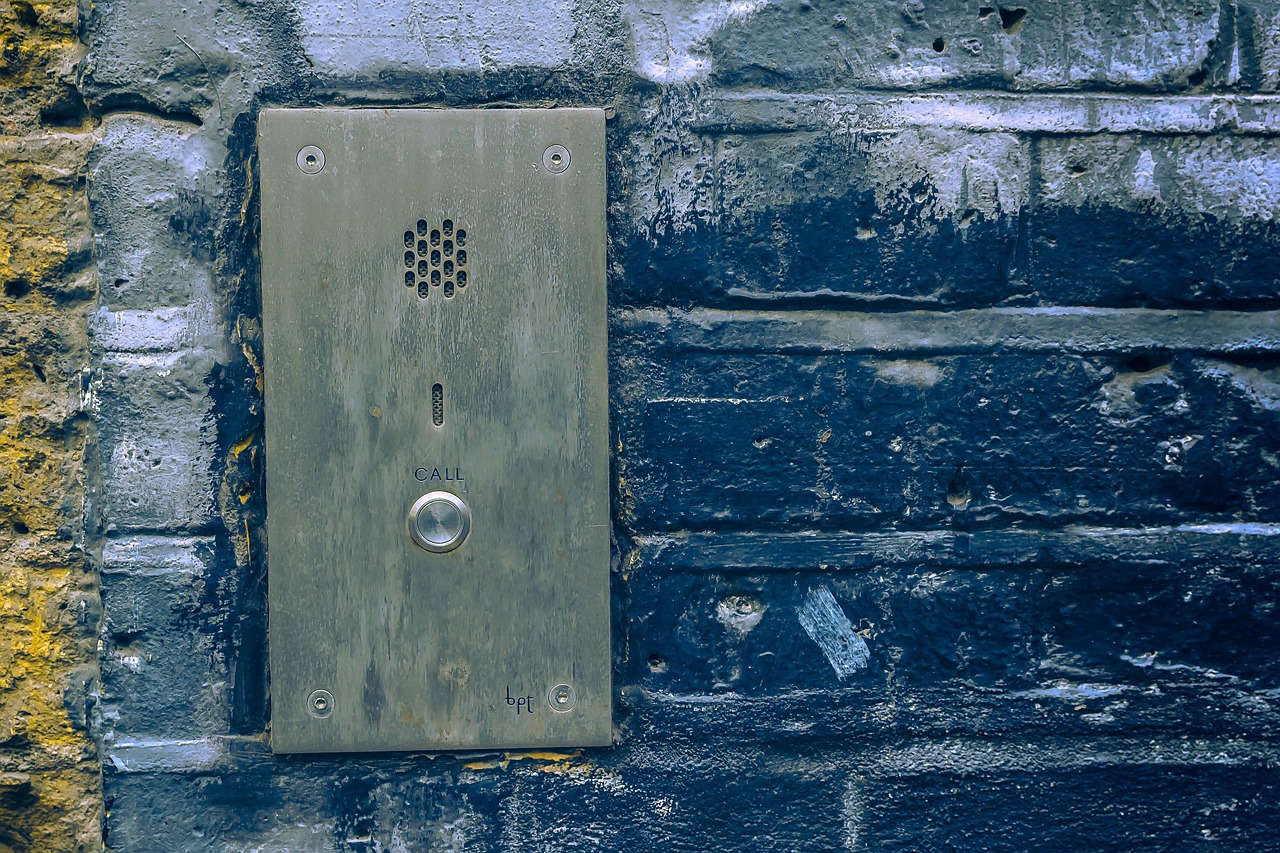
Base Isolation Systems
When it comes to protecting your home from the unpredictable forces of nature, stand out as a remarkable innovation. Imagine your home being able to dance gracefully during an earthquake, absorbing the shocks and sways instead of crumbling under pressure. That's the essence of base isolation! This technology separates the building from ground motion, allowing it to move independently during seismic events. It’s like placing your house on a giant trampoline, where the trampoline absorbs the impact, keeping your home safe and sound.
Base isolation systems typically consist of a series of bearings or pads that are installed between the foundation and the structure of the building. These components can be made from materials such as rubber, steel, or a combination of both. The primary function of these systems is to allow horizontal movement while restricting vertical movement, thus preventing the building from experiencing the full force of seismic waves. This is particularly crucial in areas that are prone to earthquakes, as it can significantly minimize structural damage and enhance safety.
One of the fascinating aspects of base isolation systems is their adaptability. They can be customized to fit various types of buildings, whether it's a single-family home or a large commercial structure. Additionally, the effectiveness of these systems can be influenced by factors such as the building's height, weight, and the geological conditions of the site. It's essential to work with a qualified engineer who can assess your specific needs and design a system that will provide the best protection.
Here’s a quick overview of the benefits of implementing base isolation systems:
- Reduced Damage: By decoupling the building from ground motion, base isolation significantly reduces the forces transmitted to the structure, minimizing damage during an earthquake.
- Increased Safety: These systems enhance the overall safety of occupants, providing peace of mind knowing that your home is better equipped to handle seismic activity.
- Preservation of Contents: Base isolation helps protect not just the structure but also the valuable contents within your home, such as furniture, electronics, and personal items.
- Long-Term Cost Savings: Although the initial investment may be higher, the long-term savings from reduced repair costs and insurance premiums can be substantial.
In conclusion, investing in a base isolation system is akin to putting on a seatbelt in a car—it's a proactive measure that can save lives and protect property. As you consider ways to enhance your home's earthquake resilience, don't overlook the transformative potential of base isolation systems. They offer a blend of engineering ingenuity and practical safety, making them a worthy consideration for any homeowner looking to safeguard their abode against the unpredictable forces of nature.

Retrofitting Techniques
When it comes to safeguarding your home against the unpredictable nature of earthquakes, play a pivotal role. These methods are designed to upgrade existing structures, ensuring they can withstand seismic forces better than they could when originally built. Think of retrofitting as giving your home a much-needed armor, allowing it to stand tall and resilient during the shaking that comes with an earthquake.
One of the most common retrofitting techniques involves the addition of steel braces or shear walls. These elements can significantly enhance the lateral strength of your home, which is crucial during an earthquake. Imagine trying to hold a book upright; if you only rely on the spine, it might topple over. However, if you add supports on the sides, it stands firm. Similarly, these braces and walls provide that extra support to your home.
Another effective technique is the installation of moment-resisting frames. These frames are engineered to allow for slight movements without compromising the integrity of the structure. They act like a flexible dancer, bending and swaying with the rhythm of the earthquake rather than breaking under pressure. By allowing for this movement, the frames distribute the seismic forces more evenly, reducing the risk of collapse.
Additionally, homeowners might consider foundation bolting. This method involves securing the house to its foundation with bolts, which helps prevent it from sliding off during seismic activity. Just like a ship anchored firmly in a harbor, a well-bolted house will remain steadfast even when the ground shakes beneath it. It's a simple yet effective way to enhance stability and minimize damage.
For those living in older homes, soft-story retrofitting is particularly important. Many older buildings have open spaces on the ground floor, such as garages, which can create weak points during an earthquake. By adding braces or walls to these soft stories, you can significantly improve the overall strength of your home. It's akin to reinforcing the legs of a table; without those sturdy legs, the table is likely to wobble and fall over.
Incorporating these retrofitting techniques not only enhances the safety of your home but can also contribute to its overall value. Homes equipped with modern seismic safety features are increasingly sought after, providing peace of mind for both current and prospective homeowners. So, if you're considering retrofitting, think of it as an investment—not just in your property, but in your family's safety.
Q: What is retrofitting?
A: Retrofitting is the process of upgrading existing structures to improve their ability to withstand seismic forces, making them safer during earthquakes.
Q: How do I know if my home needs retrofitting?
A: If your home was built before modern seismic codes were established, or if you notice signs of structural weakness, it may benefit from retrofitting. It's best to consult with a structural engineer for a thorough assessment.
Q: Are retrofitting techniques expensive?
A: The cost of retrofitting can vary widely depending on the techniques used and the size of your home. However, the investment is often worth it when considering the potential damage and loss of life that can occur during an earthquake.
Q: Can I retrofit my home myself?
A: While some minor retrofitting tasks can be done by homeowners, it's recommended to hire professionals for major retrofitting projects to ensure safety and compliance with building codes.

Wall and Roof Reinforcement
When it comes to making your home safe from earthquakes, reinforcing your walls and roof is absolutely essential. Think of your house as a ship sailing through stormy seas—if the hull is weak, the ship is destined to sink. Similarly, if your walls and roof aren't sturdy enough, they may not withstand the forces of nature during a seismic event. The good news is that there are effective methods and materials available to boost the structural integrity of your home, ensuring that it can ride out the tremors without taking on water—or in this case, damage.
First off, let's talk about materials. Using reinforced concrete or steel framing can significantly enhance the strength of your walls. These materials are designed to absorb and dissipate energy, which is crucial during an earthquake. You might also consider adding shear walls, which are vertical walls made from reinforced materials that help resist lateral forces. Think of them as the backbone of your home, providing stability and support when the ground starts to shake.
Now, don't forget about your roof! A well-anchored roof can prevent catastrophic failure during an earthquake. One effective method is to use hurricane ties or metal connectors that secure the roof to the walls, ensuring that they work together as a single unit. This connection is vital, as it creates a more cohesive structure that can better withstand the shaking. Additionally, lightweight roofing materials can reduce the overall load on your home, making it easier for your structure to handle seismic forces.
Another important aspect of wall and roof reinforcement is the installation of bracing systems. Bracing can take many forms, including diagonal braces or shear panels, and is designed to provide extra support to your walls. This is particularly important for homes with large openings, such as windows and doors, which can weaken the overall structure. By adding bracing, you effectively create a sturdy framework that can resist the twisting and turning that often occurs during an earthquake.
In some cases, you may also want to consider insulating your walls with materials that can absorb shock waves. This not only helps protect your home but can also improve energy efficiency. It’s like putting on a warm coat during winter; it keeps you safe from the elements. Similarly, good insulation can cushion your home from the seismic impacts, providing an additional layer of protection.
In summary, reinforcing your walls and roof is a critical part of your earthquake preparedness strategy. By using strong materials, implementing effective bracing systems, and ensuring secure connections between your roof and walls, you can significantly increase your home’s resilience against seismic activity. Remember, the goal is to create a home that stands strong, much like a fortress, ready to weather whatever nature throws its way. So, don’t wait for the next earthquake to take action—start reinforcing today!
- What are the best materials for wall reinforcement? Reinforced concrete and steel framing are highly recommended for their durability and ability to absorb seismic energy.
- How can I reinforce my roof? Using hurricane ties and lightweight materials can significantly enhance the strength and stability of your roof.
- Is it necessary to hire a professional for reinforcement? While some reinforcement can be done as a DIY project, it’s advisable to consult with a structural engineer for comprehensive assessments and installations.
- What is a shear wall? A shear wall is a vertical wall designed to resist lateral forces, providing critical support during an earthquake.
- How often should I check my reinforcement? It’s a good idea to inspect your home’s structural elements every few years, especially after significant seismic events.

Emergency Preparedness Plans
When it comes to ensuring the safety of your loved ones during an earthquake, having a well-thought-out emergency preparedness plan is absolutely essential. Think of it as your family's roadmap to safety—something that guides you through the chaos of an earthquake. The first step in creating this plan is to sit down with your family and discuss what to do when the ground starts shaking. It’s not just about knowing where to hide; it’s about having a comprehensive strategy that covers evacuation routes, communication methods, and emergency contacts. This conversation should be ongoing, not a one-time event, as circumstances and family dynamics can change.
In your plan, consider identifying safe spots in your home where everyone can gather, such as under sturdy furniture or against interior walls away from windows. It’s crucial to practice these drills regularly, so everyone knows exactly what to do when the moment of truth arrives. Just like fire drills in schools, practicing earthquake drills can help reduce panic and confusion. Remember, when the ground shakes, every second counts!
Another vital component of your emergency preparedness plan is to establish a communication strategy. During an earthquake, phone lines can become overloaded, making it difficult to reach loved ones. Therefore, it’s wise to designate a family member who lives out of town as your primary contact. This way, if local communications fail, you can still relay messages through this person. Make sure everyone in your family knows how to reach this contact and has their number saved in their phones.
Don’t forget to create a detailed map of your evacuation routes. This should include multiple paths to safety, considering that some routes might be blocked or unsafe after an earthquake. Having alternatives ensures that you’re not left scrambling when time is of the essence. You might even want to practice these routes, especially with younger children, so they feel comfortable and secure.
To help you assemble your emergency plan, here’s a simple table outlining key elements to include:
| Emergency Plan Element | Description |
|---|---|
| Safe Spots | Identify locations in your home where family members can take cover during an earthquake. |
| Communication Strategy | Designate an out-of-town contact for family members to reach during emergencies. |
| Evacuation Routes | Map out multiple routes to safety and practice them regularly. |
| Emergency Kits | Prepare kits with essential supplies to last at least 72 hours. |
Finally, it’s critical to assemble an emergency kit that contains essential supplies. This kit should be easily accessible and include items such as water, non-perishable food, a flashlight, batteries, first aid supplies, and any necessary medications. It’s recommended to keep these kits in multiple locations—like your home, car, and workplace—so you’re never too far from help. When creating your kit, think about the specific needs of your family members, including pets!
In summary, an effective emergency preparedness plan not only prepares you for the immediate aftermath of an earthquake but also gives you peace of mind. By taking the time to create and practice your plan, you can significantly enhance your family's safety and resilience during seismic events. Remember, preparedness is not just a checklist; it’s a mindset. Are you ready to take the first step?
- What should I include in my emergency kit? Your kit should have water, food, a flashlight, batteries, a first aid kit, medications, and important documents.
- How often should I practice my emergency plan? It’s best to practice your emergency plan at least twice a year to keep everyone familiar with the procedures.
- What if my family is separated during an earthquake? Designate an out-of-town contact who can help relay information and keep everyone connected.

Emergency Kits
When it comes to preparing for an earthquake, having a well-stocked emergency kit is non-negotiable. Think of it as your lifeline during an unexpected seismic event. You never know when the ground might shake, so being ready can make all the difference. But what exactly should you include in this kit? The goal is to ensure that you and your family have all the essential supplies to survive for at least 72 hours without external assistance. Let’s break it down!
Your emergency kit should be tailored to your family’s specific needs, but there are some universal items that everyone should have on hand. For starters, you’ll want to include a sufficient supply of water—at least one gallon per person per day for three days. This is crucial because clean drinking water may not be readily available after an earthquake. Next, consider your food supplies. Non-perishable items such as canned goods, granola bars, and dried fruits are ideal. Aim for a three-day supply as well.
Don’t forget about medications! If anyone in your household takes prescription drugs, make sure to have a supply in your kit. Additionally, include a first aid kit stocked with bandages, antiseptics, and any other necessary medical supplies. It’s also wise to pack a flashlight with extra batteries, as power outages are common during and after seismic events. And let’s not overlook the importance of a battery-operated or hand-crank radio to stay informed about emergency updates.
Other useful items to consider adding to your emergency kit are:
- Multi-tool or Swiss Army knife: For various tasks that may arise.
- Whistle: To signal for help if you’re trapped.
- Dust masks: To help filter contaminated air.
- Moist towelettes: For personal sanitation.
- Local maps: In case GPS systems fail.
Finally, it’s essential to remember that your emergency kit is not a one-time project. Regularly check and update it to ensure that all items are in good condition and that food and medications haven’t expired. Make it a family activity; involve everyone in the process so that everyone knows where the kit is stored and what’s inside. This way, during a moment of panic, you’ll have a clear plan and a sense of security knowing you’re prepared. After all, being prepared is not just about having supplies; it’s about having peace of mind.
Q: How often should I check my emergency kit?
A: It’s a good practice to check your emergency kit every six months. This ensures that food and medications are not expired and that all items are in good condition.
Q: Where should I store my emergency kit?
A: Store your emergency kit in a place that is easily accessible to all family members. Avoid storing it in a basement or attic where it may be hard to reach during an emergency.
Q: How can I make my emergency kit more family-friendly?
A: Involve your family in assembling the kit and let them choose personal items like snacks or toys. This makes the kit more appealing and ensures everyone is aware of its contents.
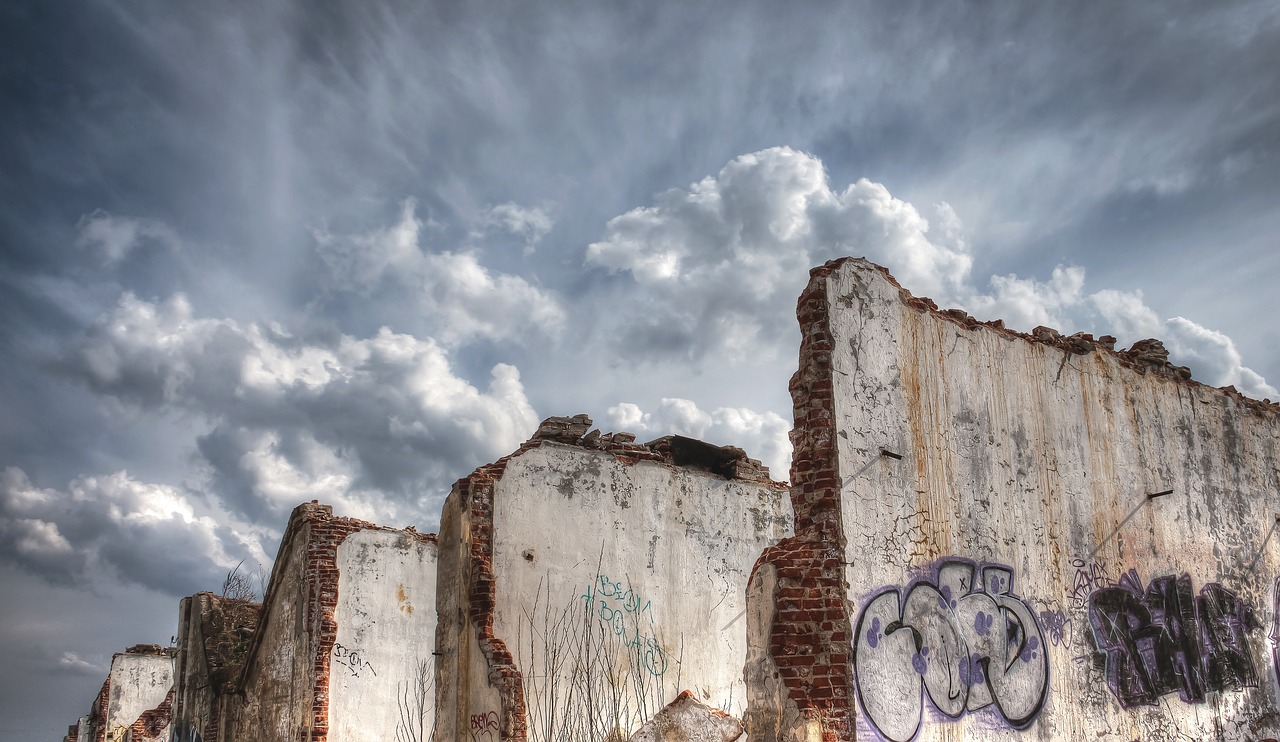
Communication Strategies
When the ground shakes and chaos ensues, having a solid communication strategy can mean the difference between safety and panic. Imagine this: an earthquake strikes, and your family is scattered across different parts of the house or even outside. How do you ensure everyone is safe and accounted for? This is where a well-thought-out communication plan becomes essential. It’s not just about shouting across the yard; it’s about having a structured approach that can help you stay connected in the face of adversity.
First and foremost, it’s important to establish a family communication plan. This plan should outline who will be responsible for what, and how everyone will communicate in the event of an earthquake. For instance, designating a family member as the point of contact can streamline communication. This person can be responsible for checking in with everyone and relaying information. Think of them as the 'communication hub' in your family's emergency network.
Next, consider the use of technology. In a world where smartphones are ubiquitous, leveraging technology can be a game changer. Encourage family members to download emergency apps that provide real-time alerts and information during seismic events. Apps like FEMA or your local emergency management app can keep you informed about aftershocks, evacuation routes, and shelter locations. However, remember that during a major disaster, cellular networks may become overwhelmed. Therefore, having an alternative method of communication is crucial.
Another effective strategy is to establish a designated meeting point. This should be a safe location outside your home where everyone can gather after an earthquake. It could be a neighbor's house, a park, or even a community center. Make sure everyone knows this location and practices getting there quickly. It’s like having a lighthouse in a storm—your family knows where to go to regroup and assess the situation.
In addition to these strategies, consider creating a communication tree. This is a simple yet effective method where each family member is responsible for contacting a specific person. For example, if you have a family of four, assign each person to check in on another. This way, if one person cannot reach someone, they can relay the message through another family member. Here’s a quick visual representation:
| Family Member | Contact Responsibility |
|---|---|
| Parent 1 | Check on Parent 2 |
| Parent 2 | Check on Child 1 |
| Child 1 | Check on Child 2 |
| Child 2 | Check on Parent 1 |
Finally, don’t forget about keeping a list of important contacts handy. This list should include local emergency services, family members, and friends who can provide assistance. Store this list in multiple locations—like on your refrigerator, in your emergency kit, and on your mobile device. It’s like having a treasure map; you never know when you’ll need to find that crucial piece of information.
In summary, effective communication strategies are vital for ensuring your family’s safety during an earthquake. By developing a family communication plan, leveraging technology, establishing a designated meeting point, creating a communication tree, and keeping important contacts easily accessible, you can enhance your family’s readiness for emergencies. Remember, when the earth shakes, staying connected can help you navigate the storm with confidence.
- What should I do first during an earthquake? Drop, cover, and hold on. Find shelter under sturdy furniture and protect your head and neck.
- How can I prepare my family for an earthquake? Create an emergency plan, practice drills, and assemble an emergency kit.
- What items should be included in an emergency kit? Water, non-perishable food, flashlight, batteries, first-aid supplies, and important documents.
- How can I stay informed during an earthquake? Use emergency apps, listen to weather radios, and follow local news for updates.

Community Resources and Support
When it comes to ensuring your family's safety during an earthquake, community resources and support play a crucial role. Think of your community as a safety net; it’s not just about what you can do alone, but also about how you can leverage the strength and knowledge of those around you. Local organizations, government agencies, and community groups often provide invaluable resources that can enhance your preparedness and response capabilities. For instance, many communities have established emergency response teams that are trained to assist residents during seismic events. These teams can provide immediate assistance, help with evacuations, and facilitate communication with emergency services.
Moreover, connecting with your neighbors can create a stronger support system. Have you ever thought about how much more prepared you would feel if you had a plan that involved your entire block? Organizing neighborhood meetings to discuss earthquake preparedness can be a game-changer. Sharing information about local resources, emergency contacts, and evacuation routes can help everyone feel more secure. Plus, it’s a great way to build relationships within your community, which can be beneficial not just during an earthquake but in everyday life.
Many local governments and organizations offer training programs that focus on disaster preparedness. These programs can equip you with the skills needed to respond effectively during an earthquake. For example, you might learn first aid, how to conduct search and rescue operations, or how to safely shut off utilities in your home. Participating in these programs not only enhances your personal safety but also strengthens your community's overall resilience. Below is a table summarizing some of the key community resources available:
| Resource Type | Description | Contact Information |
|---|---|---|
| Local Emergency Services | Provides immediate assistance during an earthquake, including search and rescue operations. | Call 911 or visit your local emergency services website. |
| Community Training Programs | Offers training on disaster preparedness and response. | Check with your local community center or Red Cross chapter. |
| Neighborhood Watch Groups | Organizes community members to support each other during emergencies. | Contact your local police department for more information. |
In addition to formal resources, don't underestimate the value of social media and local online groups. Many communities have Facebook groups or other online forums dedicated to emergency preparedness. These platforms can be excellent for sharing tips, resources, and experiences. You can ask questions, seek advice, and stay updated on local emergency drills or training sessions. Remember, the more connected you are with your community, the better prepared you will be when disaster strikes.
Q: What should I do if I feel an earthquake?
A: Drop, cover, and hold on. Find a sturdy piece of furniture to take cover under, and protect your head and neck with your arms.
Q: How can I find out about local emergency resources?
A: Check your local government website or contact your community center for information on available resources and training programs.
Q: Is it important to have a communication plan with my family?
A: Absolutely! Having a communication plan ensures that all family members know how to reach each other and where to meet after an earthquake.

Local Emergency Services
When it comes to earthquake preparedness, understanding your local emergency services can be a game changer. These services play a pivotal role in ensuring safety and providing assistance during and after seismic events. But what exactly do these services encompass? Typically, local emergency services include fire departments, police, and emergency medical services (EMS). Each of these entities has a unique function, and knowing how to access them can make all the difference when the ground starts to shake.
For instance, fire departments are often the first responders to structural collapses and fires that may occur due to an earthquake. They are trained not only to extinguish fires but also to rescue individuals trapped under debris. The police are crucial for maintaining order, directing traffic, and ensuring that emergency routes remain clear for rescue operations. Meanwhile, EMS provides immediate medical care to those injured during an earthquake, which can be vital in saving lives.
It’s essential to familiarize yourself with the contact information of these services. Make sure to save their numbers in your phone and have them posted in a visible location at home. Here’s a quick table to help you keep track of essential local emergency contacts:
| Service | Contact Number | Website |
|---|---|---|
| Fire Department | 911 | localfiredept.com |
| Police Department | 911 | localpolicedepartment.com |
| Emergency Medical Services | 911 | localems.com |
Moreover, many local emergency services offer community outreach programs that focus on disaster preparedness. These programs can provide you with valuable information about what to do before, during, and after an earthquake. They often include workshops, training sessions, and even drills that simulate real-life emergency situations. Participating in these programs not only equips you with knowledge but also helps build a sense of community and support among neighbors.
In addition to understanding the roles of local emergency services, it’s also wise to keep an eye on community alerts and notifications. Many municipalities have systems in place for sending out emergency alerts via text, email, or phone calls. These alerts can provide real-time information about earthquakes, evacuation orders, and safety tips. By staying informed, you can better prepare yourself and your family for any potential seismic activity.
In conclusion, knowing your local emergency services and their functions is crucial for earthquake preparedness. They are your lifeline during emergencies, so don’t hesitate to reach out to them for guidance and assistance. Remember, when the ground shakes, being informed and prepared can save lives.
- What should I do during an earthquake? Drop, cover, and hold on. Find a sturdy piece of furniture to protect yourself.
- How can I prepare my family for an earthquake? Create a family emergency plan, assemble an emergency kit, and practice earthquake drills.
- Where can I find more information on local emergency services? Visit your local government website or contact your city hall for resources.
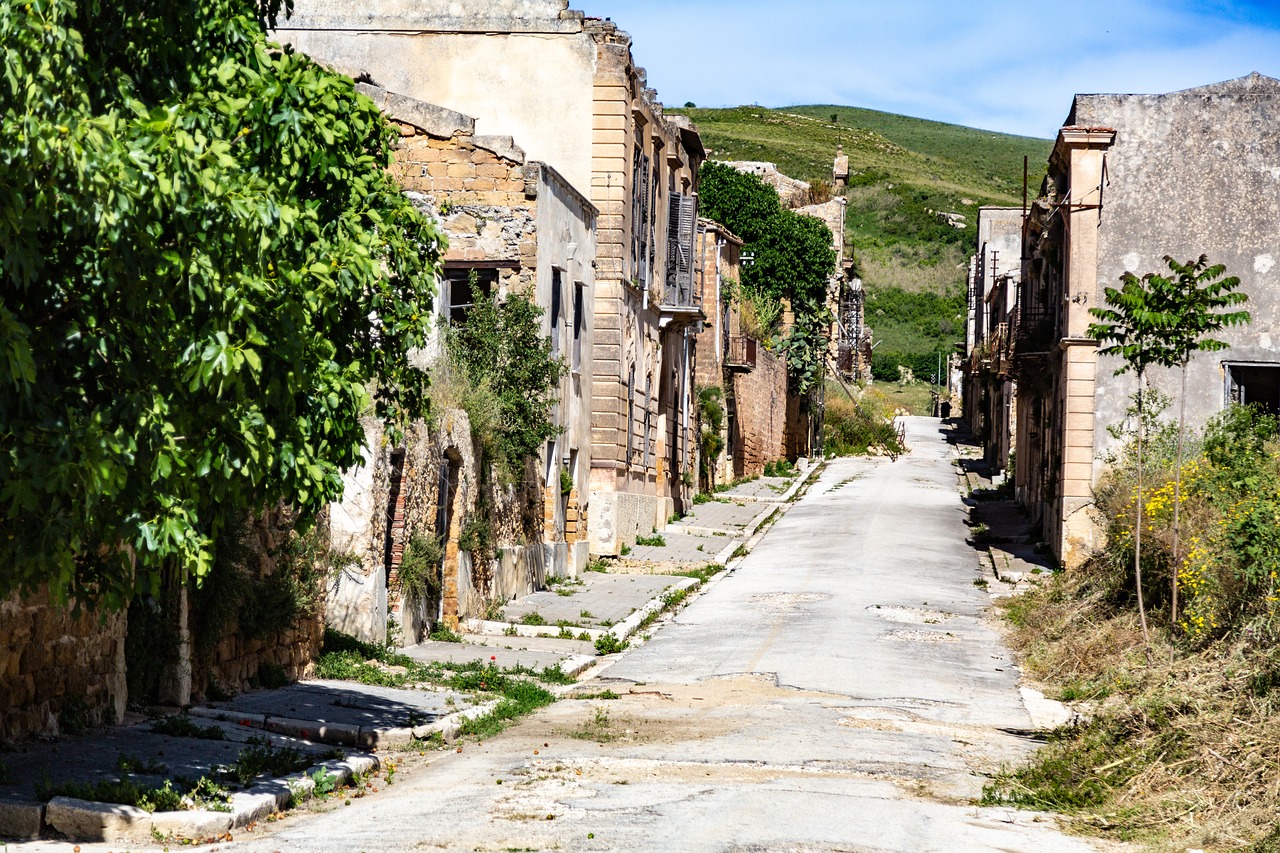
Community Training Programs
Participating in focused on earthquake preparedness is not just a good idea; it’s a lifesaver! These programs are designed to equip you and your neighbors with the necessary skills and knowledge to respond effectively during seismic events. Imagine being in the midst of an earthquake—how would you react? Would you know what to do? This is where community training comes into play, providing you with the confidence and competence to handle such emergencies.
Most community training programs cover a variety of essential topics, such as:
- Earthquake Safety Basics: Understanding what to do before, during, and after an earthquake.
- First Aid and CPR: Basic medical skills that can be crucial when help is not immediately available.
- Search and Rescue Techniques: Learning how to safely assist others in need.
These programs often involve hands-on training, simulations, and workshops that not only teach you the theory but also allow you to practice real-life scenarios. Think of it as a safety net for you and your loved ones. You might even make new friends in your community while gaining these invaluable skills!
Moreover, many local organizations partner with emergency management agencies to offer these training sessions at little to no cost. This means you can gain critical knowledge without breaking the bank! It's a win-win situation. To find a training program near you, check out your local community center or visit websites of organizations dedicated to emergency preparedness.
In addition to the training itself, these programs often foster a sense of community resilience. When neighbors are trained together, they can form support networks that are activated during emergencies. You’ll not only learn how to protect yourself but also how to assist others, creating a ripple effect of safety throughout your community.
So, why wait? Take the first step towards ensuring your family's safety by enrolling in a community training program today. Remember, preparedness is the key to survival, and being proactive can make all the difference when the ground starts to shake.
Q1: How can I find community training programs in my area?
A1: You can search online for local emergency management agencies or community centers that often host training sessions. Social media and community bulletin boards are also great resources for finding upcoming programs.
Q2: Are these training programs free?
A2: Many community training programs are offered for free or at a minimal cost, especially those organized by local governments or non-profit organizations.
Q3: What should I bring to a training program?
A3: Typically, you should bring a notebook, a pen, and any personal items you may need, such as water and snacks. Some programs may provide materials, while others may encourage you to take notes.
Q4: Can I participate in training programs if I have no prior experience?
A4: Absolutely! These programs are designed for individuals of all skill levels, and you will learn valuable information regardless of your previous experience.
Frequently Asked Questions
- What are the main risks associated with earthquakes?
Earthquakes can cause significant damage to homes, infrastructure, and the environment. The main risks include structural damage, landslides, tsunamis, and aftershocks. Understanding these risks helps homeowners implement effective safety measures to protect their families and properties.
- How can I strengthen my home's foundation?
Strengthening your home's foundation can be achieved through techniques like bolting, underpinning, and installing piers. These methods enhance stability and ensure that your home can withstand seismic forces. Consulting a structural engineer can provide tailored solutions for your specific situation.
- What is a base isolation system?
A base isolation system is a specialized technique that allows a building to move independently from ground motion during an earthquake. By absorbing seismic waves, these systems significantly reduce the risk of damage to the structure. It's a smart investment for earthquake-prone areas.
- What should I include in my emergency kit?
Your emergency kit should contain essential supplies such as water, non-perishable food, a flashlight, batteries, a first-aid kit, and important documents. Don’t forget to include medications and personal hygiene items. Having these supplies ready can make a huge difference in an emergency.
- How can I create an effective emergency preparedness plan?
To create an effective emergency preparedness plan, start by identifying evacuation routes and meeting points. Discuss the plan with your family, ensuring everyone knows their role. Regularly practice drills to keep everyone prepared and familiar with the procedures.
- What local resources are available for earthquake preparedness?
Many communities offer resources such as training programs, emergency services information, and support networks. Check with your local government or community centers for workshops and resources that can help you and your family prepare for earthquakes.
- How do I stay informed during an earthquake?
Staying informed during an earthquake involves having a reliable communication plan. Use mobile apps, NOAA weather radios, and social media to receive updates. Ensure your family knows how to reach each other and where to find information during an emergency.
















